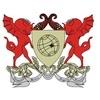Check out what is new in Pig Industry
Find the best technical articles, forums, and videos on Pig Industry at Engormix. Enter now and interact with the world's largest agricultural social network.
1. Swine Melioidosis Melioidosis, an infection endemic to Southeast Asia, northern Australia, and other tropical areas, is caused by the soil-dwelling Gram-negative bacterium Burkholderia pseudomallei, which is known to contaminate water sources [1]. The infections are cyclic and correlate with rainy seasons, which may be due to environmental disruptions such as flooding. While creating a major health concern for humans, B. pseudomallei is also a threat to various animals...
Comments : 0
Recommendations: 0
Background Although selenium (Se) acts as part of hormones and enzymes influencing the activity of all organs and tissues, the major metabolic role of Se in the body is related to selenoproteins and the antioxidant system. However, in embryos, fetuses, and newborns, the synthesis of selenoproteins from Se-methionine (SeMet) is impaired due to the inactivity of cystathionine gamma lyase in the metabolic pathway, in spite of its mRNA expression [1, 2]. This would imply...
Comments : 0
Recommendations: 0
1. Introduction Salmonella is one of the most important bacterial zoonotic and coincident food-borne pathogens worldwide and therefore one of the main causes of food-borne diseases in humans, especially caused by the serovars Salmonella enteritidis and Salmonella typhimurium [1,2]. At European the level, no significant increase or decrease in the number of human salmonellosis cases has been observed over the last years (2013–2017) [2]. In 2017, the declining trend of human...
Comments : 0
Recommendations: 0
...
Comments : 0
Recommendations: 0
TUCKER, Ga. – The International Production & Processing Expo (IPPE) is excited to announce that IPPE Marketplace will take place Jan. 25-29, 2021. IPPE will continue to support the poultry, egg, meat and feed industries through its new, online IPPE Marketplace that...
Comments : 0
Recommendations: 2
...
Comments : 6
Recommendations: 0
Ileitis is one of the main diseases affecting pig farms. The clinical presentation may be acute - haemorrhagic, chronic or subclinical. The acute form affects animals from 4 to 12 months of age. It presents with profuse and bloody diarrhoea and sudden mortalities of up to 60%. The...
Comments : 0
Recommendations: 1
INTRODUCTION Previous studies (Widmer e al., 2008; Kim et al., 2009; Jacela et al., 2010) have measured metabolizable energy (ME) and standardized ileal digestible (SID) amino acid (AA) content in high-protein distillers dried grains (HP-DDG) produced using the old front-end fractionation processes, and these data were used in developing nutrient composition tables in NRC (2012). These nutritional composition values appeared to be accurate for previous HP-DDG sources because...
Comments : 0
Recommendations: 0
FLORFENICOL On October 21, the average market price was 440 yuan/kg, an increase of 0.69% MoM, a three-month high, but slightly lower than the same period last year, a YoY decrease of 2.21%. After...
Comments : 0
Recommendations: 0
ABSTRACT Porcine reproductive and respiratory syndrome virus (PRRSV) and porcine parvovirus (PPV) infections cause significant economic losses to the pig industry and are considered the most economically important viral diseases of intensive swine production. Despite numerous reports on both diseases in several countries worldwide, the status of PRRSV and PPV in Nigeria remains largely unknown. Thus, a serological survey was conducted to determine the prevalence of PRRSV and PPV...
Comments : 0
Recommendations: 0
1. Introduction Deoxynivalenol (DON), commonly known as vomitoxin, is a potent mycotoxin produced by the fungus Fusarium graminearum, and its presence in wheat, corn, and barley crops can lead to them being downgraded to livestock feed grade. Pigs, and in particular young piglets, are poorly tolerant to DON contamination. Although extremely high doses of contamination in feed (20 mg/kg feed) will induce vomiting [1,2], swine will tolerate lower-level feed contamination to...
Comments : 0
Recommendations: 0
Introduction Protein is a major and expensive component of animal feed, accounting for about 20% of the total dry matter content of swine and poultry diets. Soybean meal is the leading source of feed protein [ 1 ]. In the gut, protein is hydrolyzed by endogenous proteases, principally pepsin (EC 3.4.23.1), trypsin (EC 3.4.21.4) and...
Comments : 0
Recommendations: 2
.mp4&w=3840&q=75)
Dr. Andreas Lemme, Director of Technical Consultancy, explains the challenges in poultry production today with a focus on improving sustainability, particularly finding optimum balance between the socio-ethical, environmental and economic factors. "With regards to environmental aspects, the WWF report from 2016 clearly identified the natural boundaries for coping with nitrogen and phosphorous are heavily exceeded"....
Comments : 1
Recommendations: 4
Seasonal variation in pig production has been implicated in variation in productive and reproductive performance through direct and indirect effects of temperature on physiological responses, including intestinal integrity, endocrine signaling, adipose mobilization, and insulin regulation. Heat stress in pig production results in industry losses resulting from slower growth rates, inconsistent market weights, altered carcass traits, infertility, increased health care costs and mortality. For...
Comments : 1
Recommendations: 0
INTRODUCTION For any technology to gain industry-wide adoption, it must provide value to all segments of the industry and have minimal associated risks. Immunological castration (Improvest, Zoetis Inc., Kalamazoo, MI, GnRF analog-diphtheria toxoid conjugate ) provides an effective alternative to physical castration for reducing boar odor of intact male pigs while improving lean deposition compared with physically castrated ( PC ) barrows. The effects...
Comments : 0
Recommendations: 0
Influenza A virus (IAV) is a member of the family Orthomyxoviridae possessing 8 negative sense single-stranded RNA segments and classified in subtypes based on the antigenicity of their surface glycoproteins: 18 subtypes for hemagglutinin (HA) and 11 subtypes for neuraminidase (NA). IAV can infect birds and several mammalian species, including human and swine. Pigs have an important role in the ecology of IAV, since they can become infected with both human and avian strains. Co-infection...
Comments : 0
Recommendations: 0
Introduction Soybean meal is one of the most readily available and economical protein sources commonly fed to pigs. Due to a number of anti-nutritional factors, its inclusion in newly weaned pig diets has been limited. Thus, specialty animal proteins, such as animal plasma, blood cells, or fish meal have been commonly added as highly digestible amino acid sources in starter diets. In recent years, the cost and variability of specialty animal proteins has increased while...
Comments : 0
Recommendations: 0
Introduction The U.S. swine industry is facing a significant change in production practices regarding gestation sow housing. Many pork producers across the United States are shifting from housing gestating sows in individual stalls to a group housing system. This is driven by animal welfare concerns, state legislatures, and food companies’ demands. Electronic sow feeding (ESF) is one option for feeding gestating sows within a group housing system. Electronic sow...
Comments : 0
Recommendations: 0
...
Comments : 1
Recommendations: 0
...
Comments : 0
Recommendations: 0








.jpg&w=3840&q=75)



.jpg&w=3840&q=75)


















